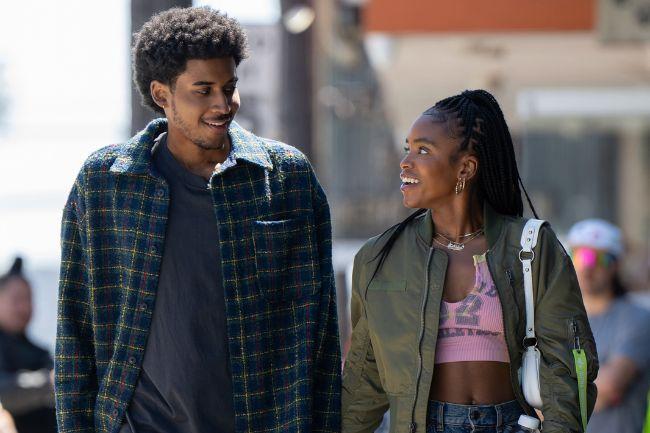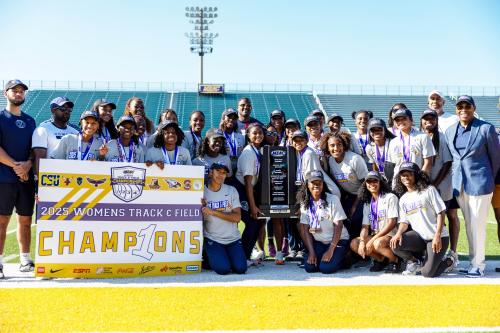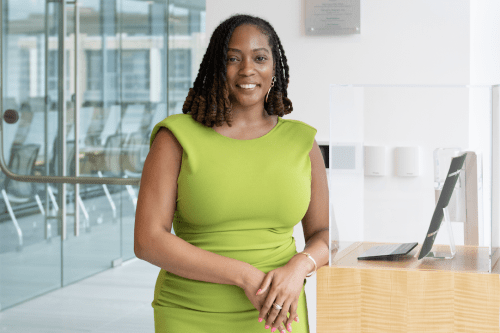
Netflix’s “Forever,” created by Mara Brock Akil, is a quietly groundbreaking series that centers Black teenage life in a way that feels both refreshingly intimate and culturally expansive. A modern reimagining of Judy Blume’s iconic 1975 novel, the show follows Keisha Clark, a high-achieving track star from South Los Angeles with her sights set on attending Howard University. But “Forever” is not just a love story between two teenagers, it’s also a love letter to ambition, identity, and the institutions that help shape Black futures.
Keisha, played with depth and determination by Lovie Simone, carries the emotional weight of the series. Her dreams of attending Howard are more than academic aspirations; they represent her pursuit of a space where Black excellence is the norm and not the exception. Her goal feels intentional, not only for the character but for what the series aims to say about Black possibility. The inclusion of Howard University as Keisha’s dream school is a powerful narrative choice, and one that speaks volumes about the cultural moment we’re in.
Howard Associate Director of Admission W. Steven Peterson captured this significance well:
“Having a character on the Netflix series ‘Forever’ who’s aiming to go to the legendary Howard University shows just how powerful and inspiring that dream really is. It highlights the draw of a place known for Black excellence, culture, and community, and could definitely spark more interest in the school from viewers who connect with that vision.”
In that way, “Forever” offers more than compelling television; it offers recruitment visibility. For an institution like Howard, which has long been a symbol of intellectual rigor and cultural pride, this kind of representation on a mainstream platform like Netflix could play a role in shaping the college aspirations of a new generation. The visibility is not only welcome, but strategically impactful.
As Dana McPherson, Assistant Vice President of Marketing and Communications at Howard, put it:
“Howard’s inclusion on a platform as influential as Netflix is more than just a moment of visibility, it’s a defining opportunity to showcase our campus, culture, legacy, and ethos on a global stage. This exposure introduces Howard to new audiences around the world, reinforcing our standing as both an academic stalwart and a global thought leader. It’s certainly a powerful affirmation of the strength, excellence, and enduring relevance of the Howard brand. And it’s one of many moments that continue to show the world what it truly means to be part of The Mecca.”
The show’s male lead, Justin Edwards (Michael Cooper Jr.), is a standout character in his own right. Coming from a privileged background but struggling academically, Justin adds necessary dimension to the portrayal of young Black men on screen. His learning differences and emotional vulnerability are depicted with care, steering clear of clichés in favor of a more honest exploration of pressure, masculinity, and self-worth. His relationship with Keisha is rich with tension and tenderness, portraying Black teenage love as something deserving of nuance.
Visually, “Forever” is lush and grounded. It highlights South L.A. not as a backdrop of hardship but as a living, breathing community full of beauty and complexity. Scenes in Martha’s Vineyard add another layer, offering glimpses into Black affluence without turning it into spectacle. The show’s soundtrack featuring artists like SZA and Childish Gambino enhances its emotional rhythm, further rooting it in the world it aims to represent.

Where “Forever” truly excels is in its quiet radicalism. It does not sensationalize trauma, nor does it overly romanticize adolescence. Instead, it allows Black teenagers to exist in their fullness — flawed, ambitious, confused, and deeply human. Their conflicts are interpersonal and internal, shaped by their environments but not reduced by them.
As Jami Ramberan, Associate Professor of Film & Television and Assistant Chair of the Department of Media, Journalism & Film, noted:
“To see Howard framed as a place of personal growth, intellectual excellence, and community in a series like Forever is monumental. It tells Black teens — especially Black girls — that their dreams are valid, and their stories deserve to be centered with care and complexity.”
In an entertainment landscape that too often flattens or marginalizes Black stories, “Forever” stands out as a series that trusts its characters and its audience. It affirms that stories about Black youth don’t need to be filtered through pain or exceptionalism to be worth telling. Sometimes, they just need to be told with honesty.
And in doing so, “Forever” also affirms institutions like Howard University — not just as symbolic references, but as real, reachable goals. It’s a subtle yet powerful reminder that representation isn’t just about being seen, it’s about being imagined in places of power, prestige, and purpose.





